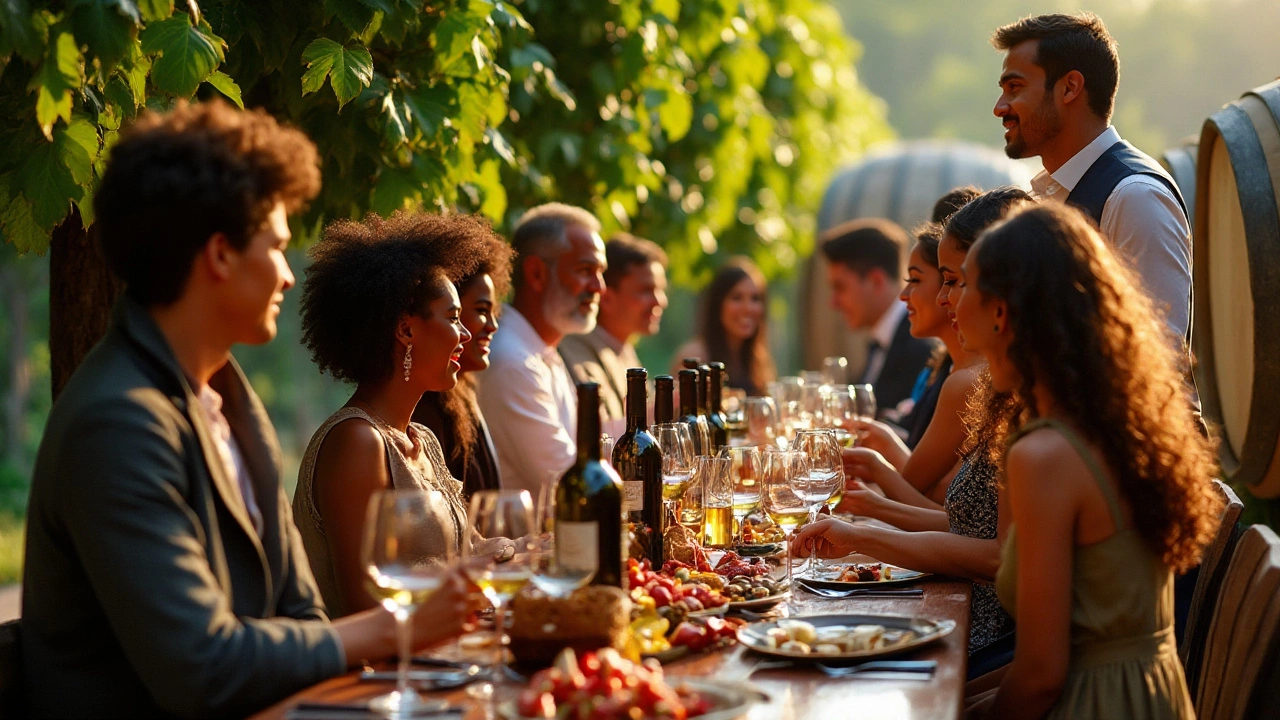
Wine tastings offer an exciting way to explore the wide world of wine, from the simplest notes of an affordable bottle to the complex symphony of an expensive vintage. But the question that often puzzles both beginners and lifelong enthusiasts alike is whether one actually drinks the wine at these events. Understanding the ins and outs of wine tasting etiquette can significantly enhance your experience, whether you're attending a cozy gathering at a local vineyard or a more formal event at a high-end winery.
While some may enjoy the full flavor experience by swallowing each sip, others might prefer to spit it out to stay clear-headed, especially if the number of wines is substantial. The decision isn't just a matter of tradition or social norms—it can also influence how you perceive each wine's character. In this article, we dive into the ritual of wine tasting, from first impressions to the last drop, and explore the choices you can make to truly savor the experience.
- Why Go to a Wine Tasting?
- The Art of Tasting Wine
- To Sip or to Swallow: The Big Question
- Wine Tasting Etiquette
- Making the Most of Your Experience
Why Go to a Wine Tasting?
Have you ever found yourself wandering down the wine aisle, feeling overwhelmed by the sheer variety of bottles with their intricate labels staring back at you? Wine tastings offer the perfect antidote to this conundrum. They present a fantastic opportunity to immerse yourself in the world of wine, enriching your senses and expanding your palate while discovering your personal preferences. Attending a wine tasting isn't just about sampling a myriad of wines; it's an exhilarating experience that combines learning, socializing, and having fun. Wine producers and enthusiasts gather to share stories, putting the rich tapestry of viticultural heritage on display. For those seeking to demystify the sometimes-intimidating realm of wines, these events provide invaluable hands-on education.
Wine tastings are also a gateway into the fascinating culture and history that each bottle holds. Every variety, from the robust reds of Bordeaux to the delicate whites of Napa Valley, narrates a unique story of its origin. Many tastings include guided sessions where experienced sommeliers walk you through the characteristic aromas and textures of each wine, helping you identify subtle nuances that might otherwise go unnoticed. The ability to distinguish layers within a wine is an art form in itself and one that can heighten your appreciation considerably. Sure, you could read about these tastes in a book or watch a documentary, but nothing compares to the firsthand experience of swirling, sniffing, and sipping your way through a curated selection.
For those thirsting for knowledge, many wine tastings offer seminars or workshops where experts share insights on the winemaking process, varietal differences, and trends in viticulture. These educational segments can be a boon to anyone interested in delving deeper into the world of wine, whether you're an aspiring collector or simply a curious drinker craving more context with your Cabernet. Wine tastings cater to all levels of interest and expertise, from the novice eager to refine their taste to the seasoned aficionado looking to discover cutting-edge blends. Participating in these events can also introduce you to rare wines you might not encounter elsewhere, often direct from boutique wineries.
Moreover, attending a wine tasting is often a social affair. It's about connecting with other wine lovers, sharing chats about your favorite finds, and maybe even making new friends. The environment is typically relaxed and convivial, striking a perfect balance between sophistication and friendly camaraderie. Whether you're going solo or with a group, you're sure to leave with more than just the memory of delightful vintages. The shared experience of discovery and enjoyment can create bonds that last long after the glasses have been cleared. A delightful anecdote from a winemaker or a competition on who detects more notes in a wine can make the outing memorable.
Intriguingly, wine tastings are not just about indulging the palate; they can be a feast for the eyes, too. Events often take place in stunning settings—orchards with panoramic views, charming cellars steeped in history, or chic modern spaces styled to complement the visual allure of the wines themselves. This scenic element adds an extra layer of enjoyment, making a wine tasting an experience that appeals to all senses. The visual aesthetics, combined with the sensory experience of the wines, create a moment that's as satisfying to the soul as it is to the taste buds. It's a chance to escape the daily grind and luxuriate in the simple pleasure of discovery.
The Art of Tasting Wine
Diving into the world of wine is like opening a gateway to complex flavors, intriguing aromas, and a rich tapestry of history and geography. To truly appreciate the nuances of each bottle at a wine tasting, it helps to approach the experience with a methodical yet curious mindset. A systematic approach can transform even the most novice drinker into a confident taster. First, observe the wine’s color and clarity. By holding the glass at an angle against a white background, you can discern color variations that may hint at the grape variety, age, and region of origin. Youthful reds typically showcase vibrant purple hues, while older wines might reveal more brick-like tones.
Engage your sense of smell by swirling the wine gently in the glass, releasing its aroma molecules. This step is crucial since a significant portion of wine's flavor comes from its scent. Bringing the glass to your nose, take a series of short, focused sniffs. You might notice initial fruit notes, followed by subtler undertones like vanilla, tobacco, or even fresh-cut grass. These layered aromas contribute to a wine's complexity, painting a vivid picture of its unique profile. It's a moment that invites you to take your time and explore the aromatic depth of what's in your glass.
Next comes the tasting: take a small sip and let the wine coat your palate. This is where the real exploration begins. Note its sweetness, acidity, tannin structure, and overall body. Each factor plays a role in the wine's balance and can vary significantly even among wines of the same grape variety. For instance, a wine session might reveal that while two Chardonnays are both smooth, one has a pronounced oaky texture, whereas the other might carry a breezy citrus finish. The variety within the tasting process itself can be a delightful surprise.
The term "mouthfeel" also comes into play. Does the wine feel heavy or light on your tongue? Is it silky and smooth or a bit grippy? These tactile sensations can enhance your tasting experience. Swallow or spit, evaluating the finish or aftertaste is next. A good wine often leaves a lingering impression that beckons you back for another sip, engaging your senses in a lasting conversation. Occasionally, you might come across suggestions from renowned sommeliers or wine critics. According to food and wine expert Karen MacNeil, "Wine is incredibly personal; more than anything else, it tells you a story if you’re willing to listen."
Tasting wine is not just about identifying flavors; it’s about the journey through the character and soul of each bottle. Keeping a journal can be a great way to keep track of which wines captivated you and which didn’t, adding another layer to your tasting adventure. It allows you to build a memory log as unique as your palate, transforming a simple act of tasting into an engaging learning loop. If statistics interest you, knowing that the global consumption of wine is forecasted to grow by 2% yearly till 2025 could make you appreciate the cultural significance of your tasting session even more. Whether it's a casual affair or a formal event, savor each glass with an open mind and a hearty dash of curiosity, and you're bound to uncover the profound art of tasting wine.
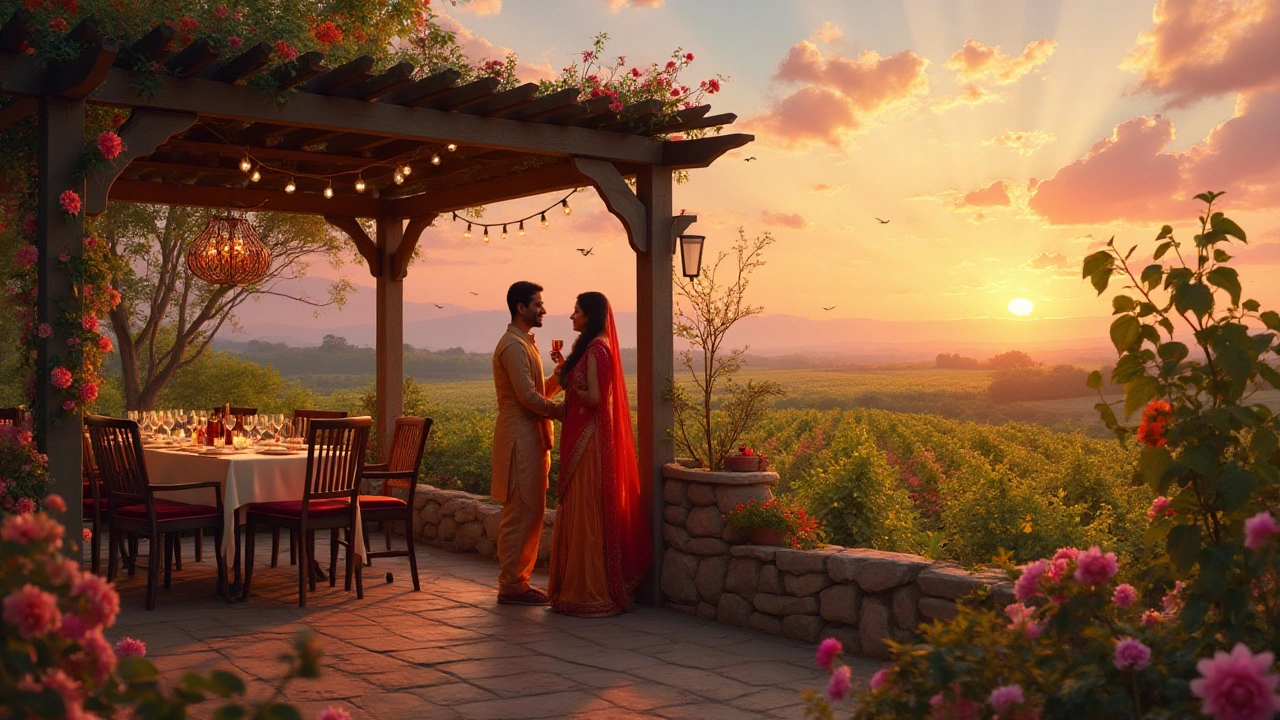
To Sip or to Swallow: The Big Question
The quandary of choosing whether to drink or spit during a wine tasting isn’t just a matter of etiquette; it’s deeply entwined with how thoroughly one can experience and appreciate wine. At the heart of this decision lies the purpose of the tasting. If the event is educational, focusing on learning about different varietals and developing one's palate, then spitting is often encouraged. Many experienced tasters might celebrate spitting as it prevents intoxication, allowing them to give each wine the full attention it deserves. It's not uncommon to attend events where more than twenty wines are poured, and in such cases, keeping a clear head is crucial.
For those who are newer to wine tasting, there might be a temptation to swallow each sip, savoring the full flavor profile of every wine. However, it's pivotal to consider how alcohol can dull senses and change perception over time. The first few sips swallowed might provide an authentic experience, but by the tenth glass, subtle nuances can be overlooked. Interestingly, science suggests that most of the flavors we perceive in wine come from our olfactory senses, meaning that the action of swirling and smelling arguably offers more insight than swallowing. As Hugh Johnson, a venerable wine critic, noted, "Spitting is not just for professionals; it's for anyone who wants to avoid being tipsy halfway through a tasting."
"Spitting is not just for professionals; it's for anyone who wants to avoid being tipsy halfway through a tasting." - Hugh Johnson
It's essential, though, to recognize the cultural and situational nuances that might dictate choices. For instance, in some informal or social settings, where only a handful of wines are being sampled, swallowing becomes more socially acceptable and part of the enjoyment. On the flip side, at professional wine events or intense tasting sessions encompassing a variety of wines from different regions, the etiquette leans strongly towards spitting. An amusing anecdote recounts an instance where a famous sommelier tactfully spat every sample until the grand finale, a rare vintage that wouldn't be disrespected by being expelled into the spit bucket.
The decision of whether to sip or to swallow can also depend largely on the wine sessions' format. When tasting a flight of wines alongside food pairings, swallowing is sometimes recommended to appreciate how the wine complements the dish. Yet, in structured tasting sessions, dedicated to evaluation, spitting ensures that participants can judge wines impartially. It's also worth noting that many wineries and tasting rooms gracefully provide spittoons for this very purpose. As a wine lover, the choice is personal but informed by the fact that one's palate should remain keen and engaged throughout the tasting journey.
Wine Tasting Etiquette
Wine tasting is both an art and a science, and understanding the etiquette that surrounds it can transform a potentially overwhelming experience into a delightful exploration of flavors. A fundamental aspect of wine tasting etiquette is knowing how to approach the tasting process itself. Once you're handed a glass of wine, it's polite to engage all your senses and take your time. Hold the wine glass by the stem to avoid warming the wine with your hand, which can alter the taste. When you swirl the glass, it helps aerate the wine and release its intricate aromas. Take a moment to appreciate these scents before your first sip; this ritual is a bridge to the wine's taste.
Engaging with the Host or Sommelier
Whether you're in a bustling winery or at an intimate tasting session, communication with the host or sommelier is crucial. These experts can guide you through the tasting and provide insights into each wine's character and origin. Don’t hesitate to ask questions or express your observations—interaction enriches the experience. A courteous way to show appreciation is by acknowledging the host's efforts, whether you're tasting a bottle that is aged or a recent vintage. Demonstrating curiosity and respect for their knowledge enhances your relationship and deepens your understanding of the wine.
Deciding to Sip or Spit
The age-old question, often asked by both novices and seasoned enthusiasts: when should you sip, and when should you spit? Drinking or spitting the wine depends on several factors. At a tasting event where many wines are sampled, spitting is entirely acceptable and recommended for maintaining sobriety and optimal palate function. Many facilities provide spittoons or buckets for this purpose. This choice allows tasters to focus on the diversity of wines without becoming overwhelmed. Still, there's a personal choice factor; if you're enjoying a particular glass and the setting is informal, sipping might be your preference. The key is to understand the setting and personal limits, making sure you appreciate every aspect of the flavor profile.
"Wine tasting is not just about drinking wine. It’s an art of appreciation, finding joy in every unique twist of flavor and aroma," says renowned sommelier Alice Feiring.
Mindful Tasting Practices
Mindfulness during tasting can amplify your enjoyment. Avoid perfumes or colognes that can interfere with your ability to smell the wine. Engage in cleansing your palate with water or neutral foods like bread between sips. Food items such as strong cheeses or spicy dishes should be saved for post-tasting enjoyment, as they can skew your ability to perceive subtle wine flavors. Bear in mind, each tasting is a new adventure in your wine journey. It is about understanding the history, recognizing the efforts behind each bottle, and drawing a vivid picture of the region from which it hails. Remember to respect your fellow tasters, allowing everyone space and quiet concentration in a shared appreciation of the craft.
The Role of Presentation
At a formal wine tasting event, presentation holds great significance. Wines are often presented in an ordered sequence, guiding tasters from lighter to heavier varieties. This sequence helps to preserve the palate’s sensitivity, drawing a contrast between different types of wines. Pay attention to the color, clarity, and viscosity as you hold the glass up to the light. Discussing these observations with peers not only enhances one's personal learning but contributes to a richer collective experience. Remember, wine tasting is meant to be savored slowly, with each glass offering a new opportunity to learn something new and enjoy the breadth of innovation in winemaking.

Making the Most of Your Experience
To truly enjoy a wine tasting, it's important to immerse yourself in the entire experience, absorbing everything the event has to offer beyond just the wine itself. Begin by taking in the ambiance of the location. Whether you're at a picturesque vineyard with rolling hills in the background or a sleek urban winery with a modern vibe, the setting plays a vital role in framing your tasting experience. Pay attention to the lighting, the decor, even the type of glasses provided, as each element is thoughtfully curated to enhance the wines being showcased. Engaging with these subtleties can transform a simple sip into a memorable journey, one that connects you with both the winemaker's vision and the locale's unique characteristics.
Start each tasting by examining the color and clarity of the wine, swirling it gently in the glass. This ritual not only releases the wine’s aromas but also provides a moment to anticipate the flavors you're about to explore. When it comes to swirling, it's key to do it with just the right amount of vigor. Too much and you risk losing some of the wine’s nuances; too little and you might not open it up enough to appreciate its full bouquet. During this part of the experience, engage your senses fully by holding the glass by the stem to avoid warming the wine with your hands, and observe the tears or legs of the wine as they form on the glass.
Many seasoned tasters advocate for smelling the wine before you take a sip. This invokes the complex interplay of grapes, regions, and barrels. As the aromas hit your nose, try to identify distinct notes—perhaps you'll detect a hint of ripe blackberries in a robust red, or a wisp of citrus in a crisp white. Each sniff is a whisper from the vineyard, telling stories of sunlit days and cool, shadowed nights. Some connoisseurs even suggest alternating nostrils to better capture the subtleties of each aroma. According to renowned sommelier Karen MacNeil, who noted, “Every wine appeals to different aspects of your senses, and the more you are aware of what's happening in your nose, the richer the whole experience becomes,” the scent of a wine is often a vivid prelude to its taste.
The balance between sipping and spitting is an art of personal preference and practicality. Some choose to swallow that first sip, allowing the lingering finish to fully develop on their palate, while others opt to spit, conserving their capacity for the multitude of wines available at larger events. It’s not just about quantity; it’s about savoring quality. If possible, engage in conversation with the host or sommelier about the wine’s origins and production methods. Often, a dialogue can provide insights not found on the label, deepening the appreciation for the winemaker's craft. And don’t hesitate to take notes—many experienced wine sessions participants keep a small notebook handy.
Lastly, take a moment after each wine to cleanse your palate, which can be as simple as sipping water or nibbling on a neutral-tasting cracker. This resets your taste buds and prepares them for the next profile, ensuring you can evaluate each wine with a clear, unbiased sense of taste. A well-chosen selection of tastings might include a progression from light to hearty, each one a stepping stone to the next with none overpowering the other. A strategic tasting sequence respects the intrinsic character of each wine, allowing you to explore the intricate tapestry of flavors with clarity and delight.
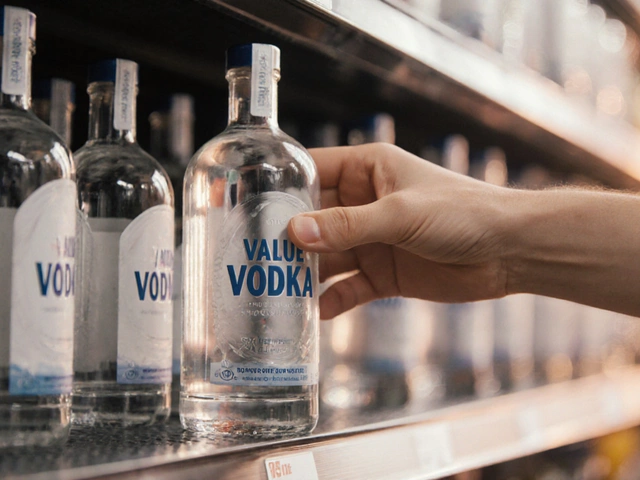
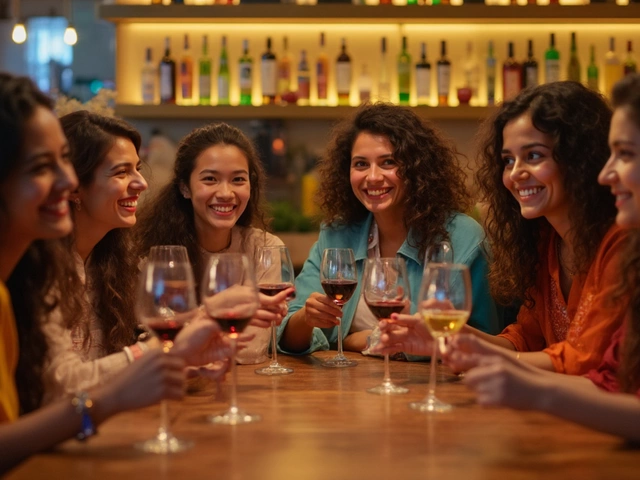

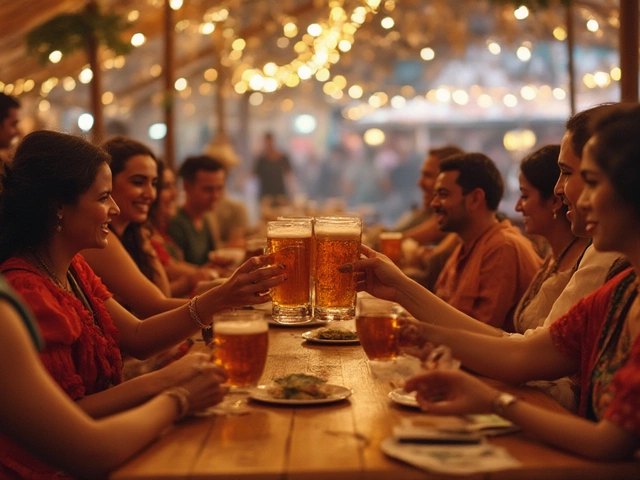
Categories